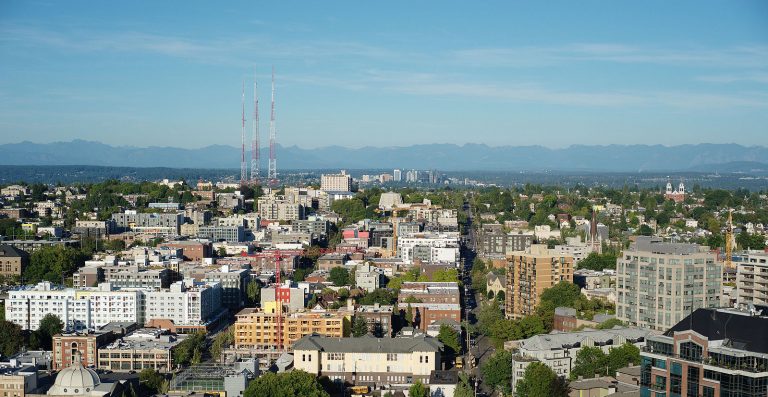Published on June 22, 2020

For more than a week, protesters against police brutality and racial injustice have occupied a six-block stretch of a Seattle neighborhood and turned it into a festive hub for their demonstrations.
They named it the Capitol Hill Autonomous Zone, or CHAZ, since renamed the Capitol Hill Occupied Protest (CHOP), after police withdrew from a police station in the neighborhood after clashing with protesters.
Since then, the protesters—who come from a variety of groups and interests— have formed a movement known as Free Capitol Hill and demanded broad reforms, including to the criminal justice system and healthcare. Also among their list of demands is a call for the “de-gentrification of Seattle, starting with rent control.”
But why are protesters calling for the city’s gentrification—where the character of neighborhoods is changed with an influx of affluent residents and businesses—to be reversed?
Over the past two decades, the city has experienced a construction boom as companies like Amazon added tens of thousands of workers and other tech giants, including Google and Facebook, expanded operations.
But competition for scarce housing and rising rents has led to many being forced out of their homes.
For Seattle’s African American community, housing discrimination is not new.
Decades of systemic racism and disinvestment, including redlining that forced African Americans into specific neighborhoods, have left communities of color and those with low incomes most vulnerable to displacement.
Such covenants are “the reason for the ghetto,” Quintard Taylor Jr., a professor of American History at the University of Washington previously told The Seattle Times. “In Seattle, blacks and Asians were restricted to the areas not covered by restrictive covenants. They got what was left over, often the least-desirable parts of the city.”
Continue reading at Newsweek.
Originally written by Khaleda Rahman for Newsweek.